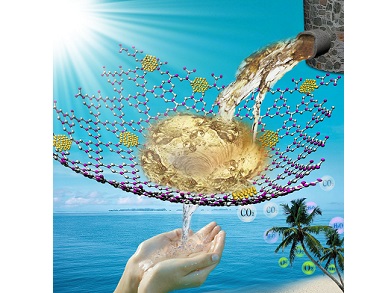Removing organic pollutants from wastewater by means of visible-light-induced photocatalysts has attracted a lot of attention in recent years.
Hui Xu and Huaming Li and their research groups at Jiangsu University, China, have developed a new type of graphene-like MoS2/C3N4 composite by means of a facile ethylene glycol-assisted solvothermal treatment. They found for the degradation of methyl orange, a dye commonly used as a model pollutant in wastewater studies, when the composite photocatalyst was irradiated with visible light, it displayed enhanced activity relative to those of the respective individual graphene-like (GL) components GL-MoS2 and GL-C3N4. They attribute this activity to the presence of a heterojunction structure between the two GL components that supports the efficient separation of electron–hole pairs as a result of their matching band potentials.
In addition the team found that GL-MoS2/C3N4 worked well as a sensor for trace amounts of Cu2+ in water and thus may also have potential applications for use in heavy-metal-ion trace analysis and detection in the aqueous environment.
- Construction of a 2D Graphene-Like MoS2/C3N4 Heterojunction with Enhanced Visible-Light Photocatalytic Activity and Photoelectrochemical Activity,
Jia Yan, Zhigang Chen, Haiyan Ji, Zheng Liu, Xin Wang, Yuanguo Xu, Xiaojie She, Liying Huang, Li Xu, Hui Xu, Huaming Li,
Chem. Eur. J. 2016.
DOI: 10.1002/chem.201503660




